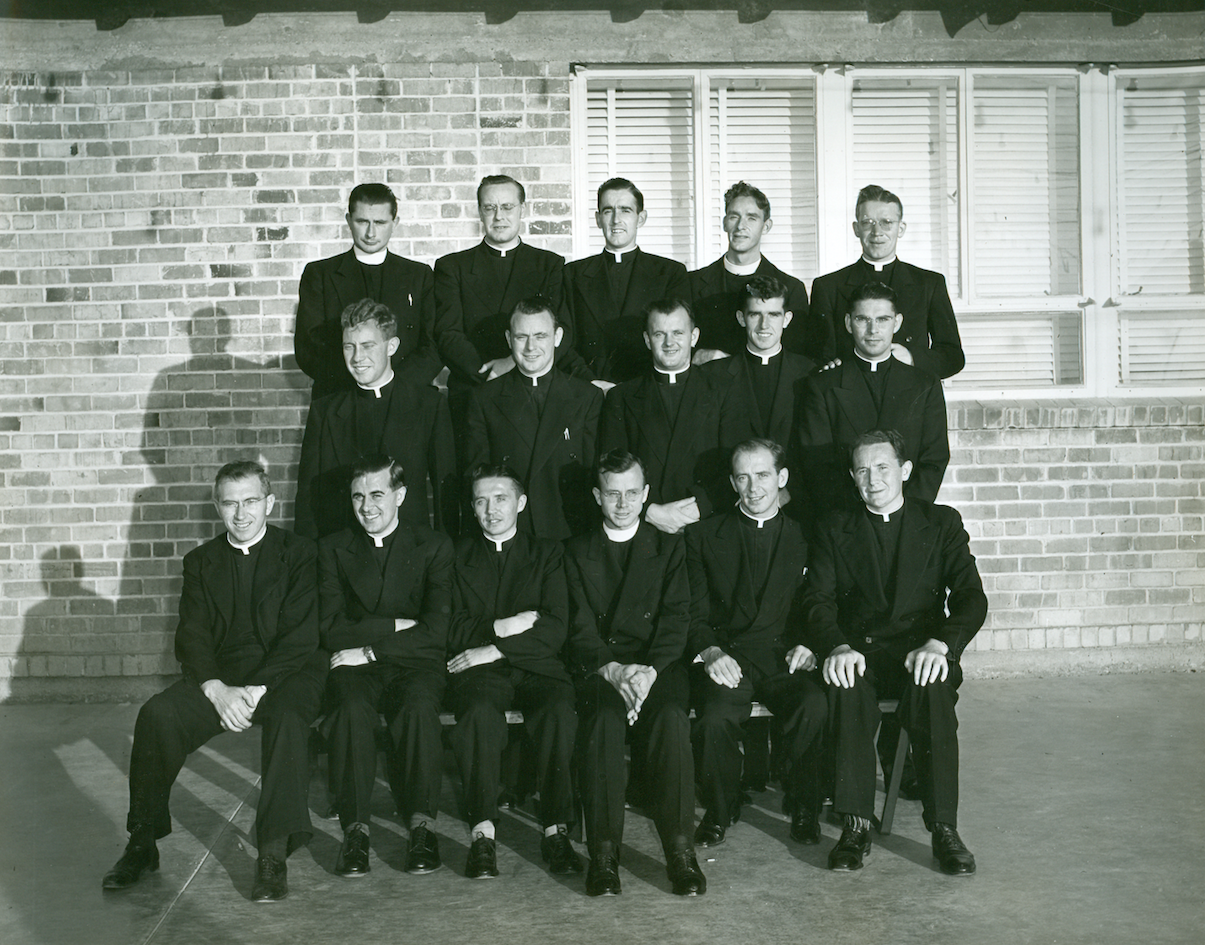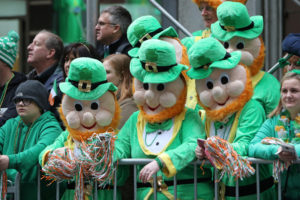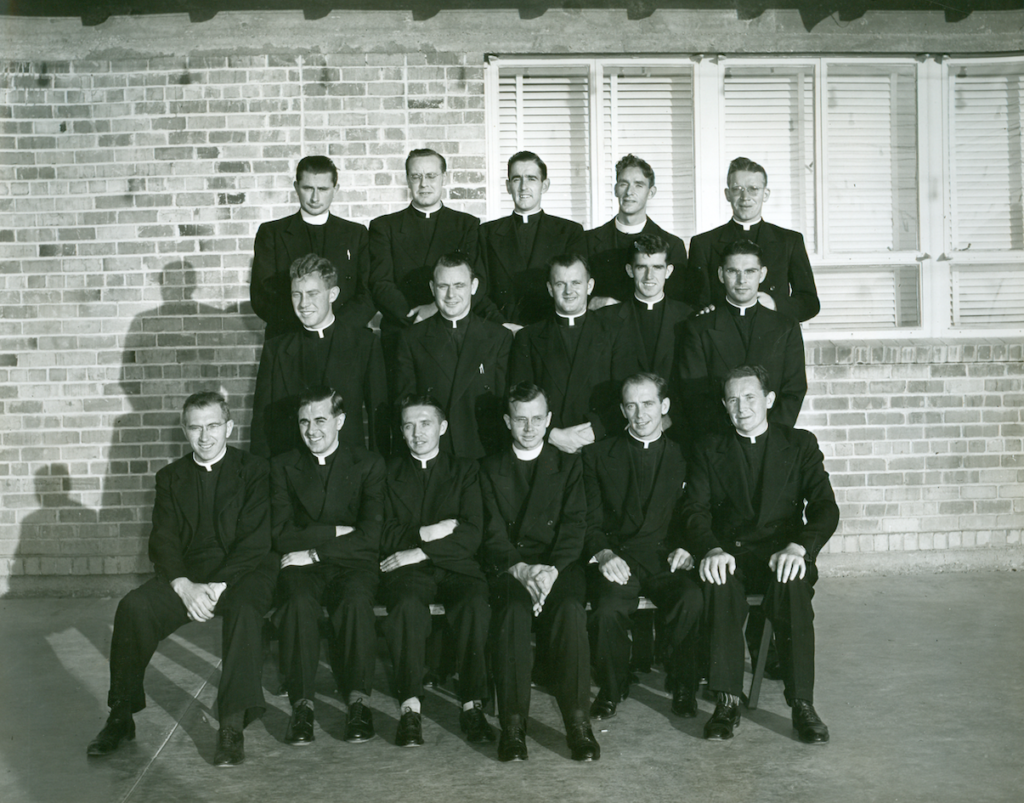
The verdant fields that grace the Irish countryside are a long way from the scorching desert of Arizona, but that didn’t stop more than 100 priests from making their way to ‘State 48’ through the years. With St. Patrick’s Day festivities and the wearing ‘o the green underway, The Catholic Sun wanted its March 17 edition to honor the many contributions of Irish clergy here in the diocese.
Waves of priests from the Emerald Isle began arriving in what was then the Diocese of Tucson in 1946. This year marks the 70th anniversary of the arrival of Fr. Neil McHugh, a native of Donegal who crossed the Atlantic, then took a train to Tucson in order to begin his ministry as the first Irish priest in Arizona.
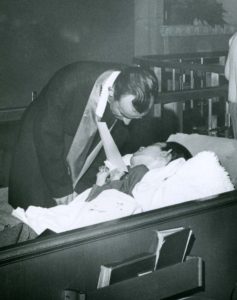
There were 54 Irish men ordained for the Diocese of Tucson who became permanently attached to Arizona. When the Diocese of Phoenix was established in 1969, a number of those priests were stationed at parishes that were within the new diocese’s territory. Other Irish priests belonged to religious orders and served in the state for a few years.
“Some have called Ireland a priest factory,” said Fr. John Cunningham, referring to the influx of brogue-bearing clerics that began after World War II and ended about 1970. A native of Arizona, Fr. Cunningham’s parents and older siblings were born in Ireland. Last year, he completed his doctoral dissertation in which he took up the topic of the Irish priests who came to Arizona, many of whom began their ministry in largely Mexican communities. The similarities between the two immigrant groups were myriad, he discovered.
Fr. Eugene O’Carroll agreed — the commonalities between the Irish and the Mexicans were striking. His first assignment was in Morenci. Later, at Immaculate Conception Parish in Douglas, he learned to preach in Spanish.
“When I was a young priest, I went to one of the weddings,” Fr. O’Carroll said. “They drove up and down the street honking the horns. The crazy thing is, they do that in Ireland — it was normal back home in Donegal.”
Msgr. Michael O’Grady, who grew up in County Clare, also picked up on the similarities between the two groups, especially when it came to the emphasis on family life.
“We felt so at home with them because they were very much like us,” Msgr. O’Grady said. “My parents were Catholic to the bone, but they didn’t know much dogma. They went to church and said their prayers.”
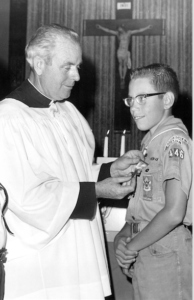
Both the Irish and the Mexicans grew up in a land where their nationality was intertwined with the Catholic faith. They could identify with the poverty, having grown up poor themselves, and they knew what it was like to be discriminated against because of the faith too.
“At the time Catholicism was in our bones, in our breath,” Msgr. O’Grady said. “We didn’t know there was anything else. Actually in my village there was just one non-Catholic and she later converted.”
Imbued with missionary zeal, hundreds of men in Irish seminaries were ordained every year. The late Msgr. John McMahon persuaded many of them to commit to Arizona, though there was perhaps a shenanigan or two along the way.
“He was a good salesman,” Msgr. O’Grady quipped. “We used to joke afterwards that he showed us pictures of Prescott.”
Thinking over a lifetime of service in the Arizona sun, he summed it up: “It’s been a good choice. We’ve loved it here.”
Although the priests loved Arizona, Fr. O’Carroll allowed as how there was a wee bit of homesickness in the early years, yet there was no turning back. Many of the Irish priests, affectionately known by some as the FBI — Foreign- Born Irish — had never ventured far from their homes, much less left the country.
People wearing leprechaun costumes watch the 2015 St. Patrick’s Day Parade in New York City. (CNS photo/Gregory A. Shemitz)
Related
Search for Irish roots adds depth to author’s Catholic identity (CNS via CatholicPhilly.com)
What do you know about Irish history? (Take 2 Catholic podcast)
Where Irish eyes are smiling (U.S. Census map)
Irish-American heritage data (U.S. Census)
20,590: the estimated number of U.S. residents who speak #Irish Gaelic
“Of course I was homesick,” Fr. O’Carroll said. “But there was a comfort level. There were so many Irish priests and we would get together. They would teach us how to play golf. Even when I lived in Morenci, I drove 120 miles into Tucson every week.”
Thumb through any listing of parishes in Arizona and you’ll find more than a few Irish names listed as founding pastors. During the boom years in the state, the Irish priests dominated, building parishes, schools and convents, connecting people and cracking jokes along the way.
Priests weren’t the only ones to brave the snakes, scorpions and cacti that flourish in Arizona however. There were nuns, too:
- the Sisters of Mercy, founded in Dublin, came to Arizona in 1892 and established St. Joseph’s Hospital;
- the Sisters of Loreto came in 1954 at the invitation of another Irishman, Fr. Paul Smith, and established Ss. Simon and Jude School; they also began St. Jerome School — which is celebrating its 50th this year — and then spread to Flagstaff, Scottsdale and Prescott; and
- approximately 30 Presentation Sisters, also from Ireland, served in Arizona as well.



